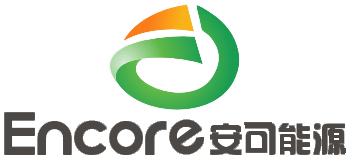- English
- Español
- Português
- русский
- Français
- 日本語
- Deutsch
- tiếng Việt
- Italiano
- Nederlands
- ภาษาไทย
- Polski
- 한국어
- Svenska
- magyar
- Malay
- বাংলা ভাষার
- Dansk
- Suomi
- हिन्दी
- Pilipino
- Türkçe
- Gaeilge
- العربية
- Indonesia
- Norsk
- تمل
- český
- ελληνικά
- український
- Javanese
- فارسی
- தமிழ்
- తెలుగు
- नेपाली
- Burmese
- български
- ລາວ
- Latine
- Қазақша
- Euskal
- Azərbaycan
- Slovenský jazyk
- Македонски
- Lietuvos
- Eesti Keel
- Română
- Slovenski
- मराठी
- Srpski језик
Common problems and explanations of lithium battery
2023-02-23
Is there any special reason for the use of aluminum foil and copper foil for the current collection of positive and negative electrodes? Is there any problem with using it in reverse? See that many documents directly use stainless steel mesh. Is there any difference?
1. Both are used as fluid collectors because they have good conductivity, soft texture (which may also be beneficial to bonding), and are relatively common and cheap. At the same time, a layer of oxide protective film can be formed on the surface of both.
2. The oxide layer on the surface of copper is a semiconductor, with electronic conduction. The oxide layer is too thick and the impedance is large; The oxide layer on the aluminum surface is an insulator, and the oxide layer cannot conduct electricity. However, because of its thin thickness, the electronic conductivity is achieved through the tunnel effect. If the oxide layer is thick, the conductivity of the aluminum foil is poor, even insulation. Generally, the surface of the fluid collector should be cleaned before use. On the one hand, the oil stain can be removed and the thick oxide layer can be removed at the same time.
3. The positive electrode potential is high, and the aluminum thin oxide layer is very dense, which can prevent the oxidation of the collector. However, the oxide layer of copper foil is relatively loose. In order to prevent its oxidation, it is better to have a low potential. At the same time, it is difficult for Li and Cu to form lithium intercalation alloy at low potential. However, if the copper surface is oxidized in large amount, Li will react with copper oxide at a slightly high potential. Al foil cannot be used as negative electrode. LiAl alloying will occur at low potential.
4. Fluid collection requires pure composition. The impure composition of AL will lead to the non compact surface facial mask and pitting corrosion, and even more, the destruction of the surface facial mask will lead to the formation of LiAl alloy. The copper mesh is cleaned with bisulfate and then baked with deionized water, while the aluminum mesh is cleaned with ammonia salt and then baked with deionized water, and then sprayed with good conductive effect.
1. Both are used as fluid collectors because they have good conductivity, soft texture (which may also be beneficial to bonding), and are relatively common and cheap. At the same time, a layer of oxide protective film can be formed on the surface of both.
2. The oxide layer on the surface of copper is a semiconductor, with electronic conduction. The oxide layer is too thick and the impedance is large; The oxide layer on the aluminum surface is an insulator, and the oxide layer cannot conduct electricity. However, because of its thin thickness, the electronic conductivity is achieved through the tunnel effect. If the oxide layer is thick, the conductivity of the aluminum foil is poor, even insulation. Generally, the surface of the fluid collector should be cleaned before use. On the one hand, the oil stain can be removed and the thick oxide layer can be removed at the same time.
3. The positive electrode potential is high, and the aluminum thin oxide layer is very dense, which can prevent the oxidation of the collector. However, the oxide layer of copper foil is relatively loose. In order to prevent its oxidation, it is better to have a low potential. At the same time, it is difficult for Li and Cu to form lithium intercalation alloy at low potential. However, if the copper surface is oxidized in large amount, Li will react with copper oxide at a slightly high potential. Al foil cannot be used as negative electrode. LiAl alloying will occur at low potential.
4. Fluid collection requires pure composition. The impure composition of AL will lead to the non compact surface facial mask and pitting corrosion, and even more, the destruction of the surface facial mask will lead to the formation of LiAl alloy. The copper mesh is cleaned with bisulfate and then baked with deionized water, while the aluminum mesh is cleaned with ammonia salt and then baked with deionized water, and then sprayed with good conductive effect.



